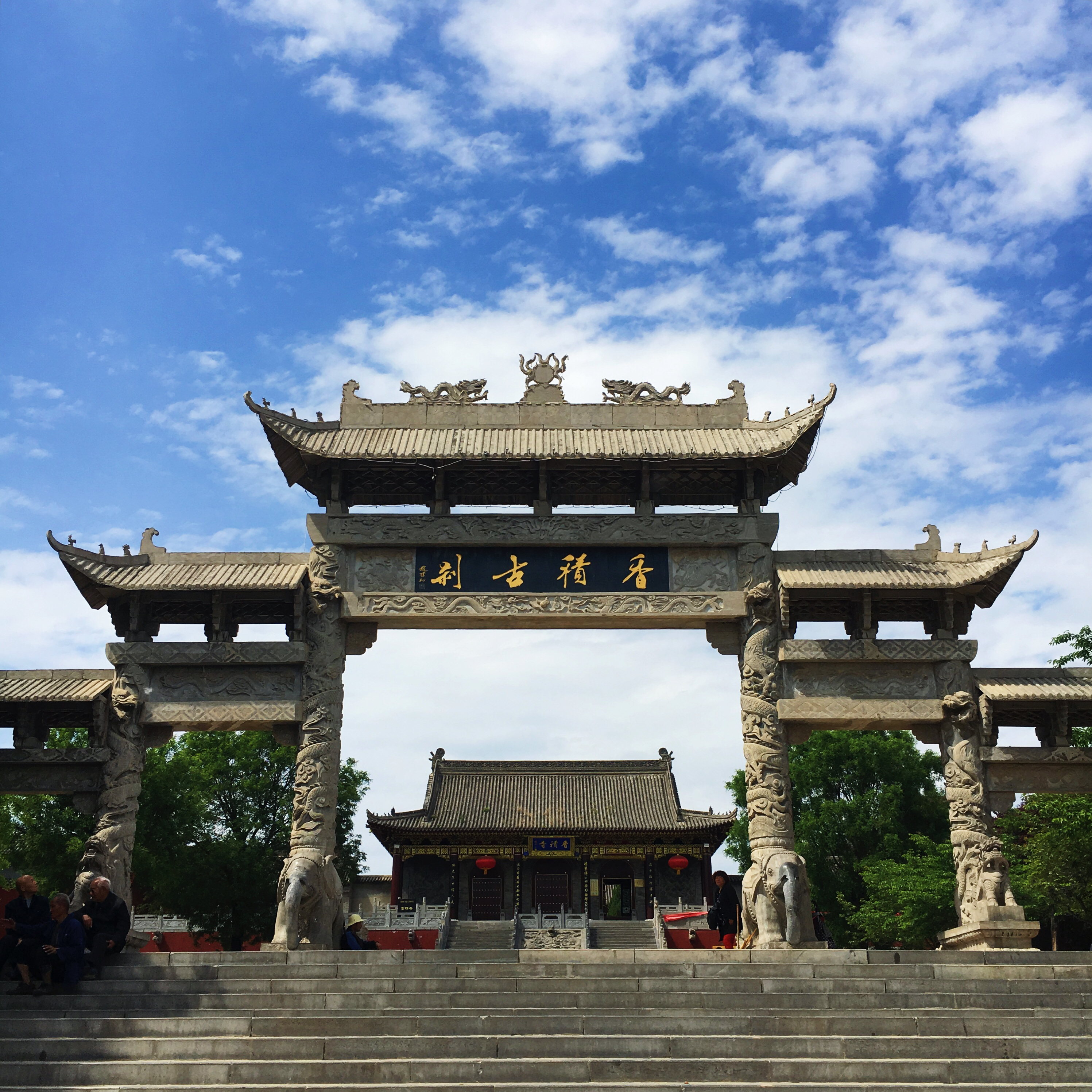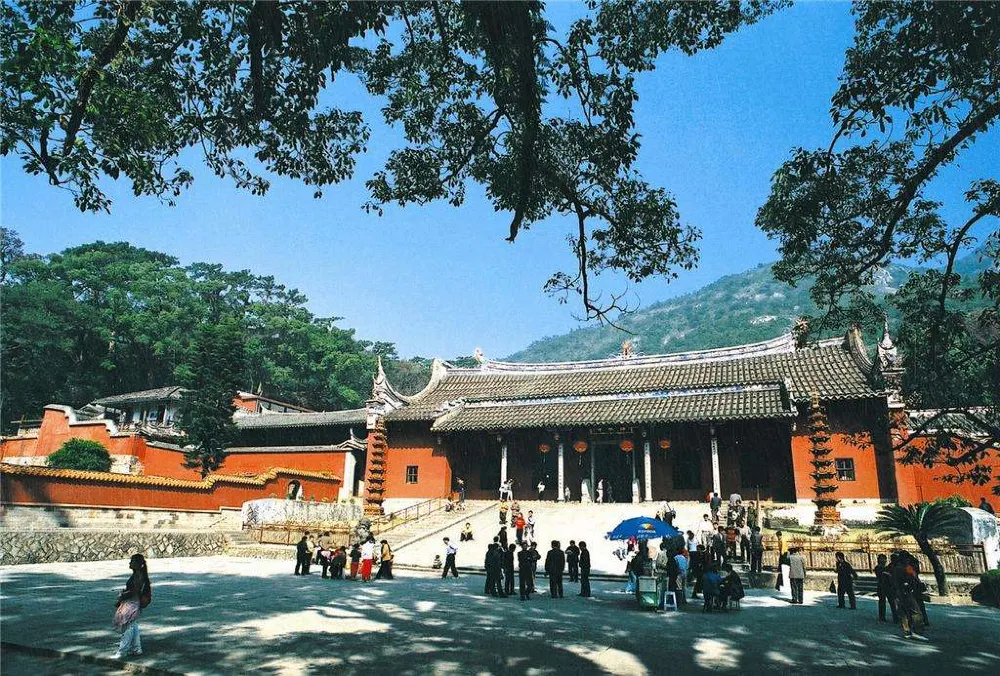
Deutsch-Chinesische Enzyklopädie, 德汉百科

公元507年,西哥特人被克洛维一世领导下的法兰克人击败,丧失了阿基坦地区的控制权,退出了高卢 。
6世纪的伊比利亚半岛在西哥特人的统治下没有发生地震式的政治事件。伊比利亚半岛上的国王们在保留罗马的旧有行政方式上比墨洛温王朝统治者们更成功些,特别是在估税和收税方面。他们在统治早期比墨洛温王朝缺乏一个宗教方面的重要优势,因为信奉亚流派的统治者与信奉天主教的西班牙-罗马人以及犹太教臣民在信仰上并不统一。
公元587年,西哥特国王里卡雷多(586年-601年在位)带领西哥特贵族和大多数亚流派的神职人员改信天主教,总算解决了这个问题,也促进了旧罗马贵族和西哥特贵族的联合。589年,里卡雷多在都城托莱多召开教会大会,两教合为一体。随后,西哥特国王强行推进天主教的普及,与犹太教爆发了冲突。
6世纪70~80年代,西哥特王国从东罗马帝国手中收回地中海沿岸地区,而权利和财富渐渐流入强势的地方贵族手中。公元711年,倭马亚王朝入侵伊比利亚半岛,公元714年被阿拉伯帝国攻灭,西哥特王国灭亡。
Das Westgotenreich war das von 418 bis 711 (bzw. 725) bestehende Reich der Westgoten, das seinen Schwerpunkt zunächst im Südwesten Galliens, später auf der Iberischen Halbinsel hatte.
Für den Zeitraum von 418 bis 507 spricht man vom Tolosanischen Reich oder Reich von Toulouse, mit der Hauptstadt Tolosa (das heutige Toulouse). Nach dem Verlust des größten Teils der Gebiete in Südgallien einschließlich der Hauptstadt Tolosa infolge einer Niederlage gegen die Franken (507) verlagerte sich der Schwerpunkt des Westgotenreichs auf die Iberische Halbinsel. Damit begann die zweite Phase, die nach der neuen Hauptstadt Toledo Toledanisches Reich genannt wird.
Nach einer verheerenden Niederlage gegen ein muslimisches Invasionsheer unter dem Feldherrn Tariq ibn Ziyad im Jahre 711 war der Untergang des Westgotenreichs besiegelt. Einzelne Regionen leisteten länger Widerstand (in der nordöstlichen Tarraconensis bis 719, im südgallischen Reichsteil Septimanien bis 725).
Das Westgotenreich nahm seinen Ausgang von einem föderierten Kriegerverband und bildet in vielerlei Hinsicht eine Brücke zwischen Antike und Mittelalter, da hier einerseits länger als in vielen anderen Regionen des römischen Westens spätantike Strukturen fortbestanden, andererseits Lebens- und Rechtsformen des Mittelalters in einigen Bereichen prototypisch und in Ansätzen entwickelt worden sind.
西ゴート王国(にしゴートおうこく、ラテン語: Regnum Visigothorum、415年 - 711年)は、現在のフランス南部からイベリア半島にあたる地域を支配したゲルマン系王国。はじめはキリスト教アリウス派、のちにカトリックを国教とし、ゲルマン文化・ローマ文化・キリスト教文化を融合させ栄えた。ビシゴート王国とも[1]。
The Visigothic Kingdom or Kingdom of the Visigoths (Latin: Regnum Gothorum) was a kingdom that occupied what is now southwestern France and the Iberian Peninsula from the 5th to the 8th centuries. One of the Germanic successor states to the Western Roman Empire, it was originally created by the settlement of the Visigoths under King Wallia in the province of Gallia Aquitania in southwest Gaul by the Roman government and then extended by conquest over all of Hispania. The Kingdom maintained independence from the Eastern Roman or Byzantine Empire, the attempts of which to re-establish Roman authority in Hispania were only partially successful and short-lived. The Visigoths were romanized central Europeans who had moved west from the Danube Valley.[5] The Visigoths became Foederati of Rome, and wanted to restore the Roman order against the hordes of Vandals, Alans and Suebi. The Western Roman Empire fell in 476 AD; therefore, the Visigoths believed they had the right to take the territories that Rome had promised in Hispania in exchange for restoring the Roman order.[6]
Under King Euric—who eliminated the status of Foederati—a triumphal advance of the Visigoths began. Alarmed at Visigoth expansion from Aquitania after victory over the British army[7] at Déols in 469, Western Emperor Anthemius sent a fresh army across the Alps against Euric, who was besieging Arles. The Roman army was crushed in battle nearby and Euric then captured Arles and secured much of southern Gaul.
Sometimes referred to as the regnum Tolosanum or Kingdom of Toulouse after its capital Toulouse in modern historiography, the kingdom lost much of its territory in Gaul to the Franks in the early 6th century, save the narrow coastal strip of Septimania. The kingdom of the 6th and 7th centuries is sometimes called the regnum Toletanum after the new capital of Toledo. A civil war starting in 549 resulted in an invitation from the Visigoth Athanagild, who had usurped the kingship, to the Byzantine emperor Justinian I to send soldiers to his assistance. Athanagild won his war, but the Byzantines took over southern Hispania and could not be dislodged. Starting in the 570s Athanagild's brother Liuvigild compensated for this loss by conquering the Kingdom of the Suebi and annexing it, and by repeated campaigns against the Basques.
The ethnic distinction between the indigenous Hispano-Roman population and the Visigoths had largely disappeared by this time (the Gothic language lost its last and probably already declining function as a church language when the Visigoths converted to Catholicism in 589).[8] This newfound unity found expression in increasingly severe persecution of outsiders, especially the Jews. The Visigothic Code (completed in 654) abolished the old tradition of having different laws for Romans and for Visigoths.
The 7th century saw many civil wars between factions of the aristocracy. Despite good records left by contemporary bishops, such as Isidore and Leander of Seville, it becomes increasingly difficult to distinguish Goths from Latins, as the two became inextricably intertwined. Despite these civil wars, by 625 AD the Visigoths had succeeded in expelling the Byzantines from Hispania and had established a foothold at the port of Ceuta in Africa. Most of the Visigothic Kingdom was conquered by Umayyad troops from North Africa in 711 AD, with only the northern reaches of Hispania remaining in Christian hands. These gave birth to the medieval Kingdom of Asturias when a local landlord called Pelayo, most likely of Gothic origin, was elected Princeps by the Astures.
The Visigoths and their early kings were Arians and came into conflict with the Catholic Church, but after they converted to Nicene Christianity, the Church exerted an enormous influence on secular affairs through the Councils of Toledo. The Visigoths also developed the highly influential law code known in Western Europe as the Visigothic Code (Liber Iudiciorum), which would become the basis for Spanish law throughout the Middle Ages.
Le royaume wisigoth est un royaume barbare ayant existé de 418 à 711, à la suite des grandes invasions et jusqu'au haut Moyen Âge.
Il a d'abord Toulouse comme capitale (il englobe la partie de la France actuelle située entre la Loire et les Pyrénées). Après la victoire des Francs menés par Clovis Ier sur les Wisigoths d'Alaric II à la bataille de Vouillé en 507, ces derniers conservent uniquement la Septimanie (correspondant au Languedoc) et une partie de la Provence avec l'aide des Ostrogoths installés en Italie. Après la perte de Toulouse en 508, les Wisigoths installent leur capitale à Tolède ; en 575 ils conquièrent le royaume des Suèves situé dans le nord du Portugal et la Galice.
En 711 le Royaume est conquis par les musulmans.
Il regno visigoto fu un regno dell'Europa occidentale tra il V e l'VIII secolo, uno degli stati successori dell'Impero romano, originariamente creato dall'insediamento dei Visigoti in Aquitania (Gallia meridionale). I Visigoti si stabilirono qui su decisione del governo romano, per poi espandersi conquistando la penisola iberica. Il regno rimase indipendente dall'Impero bizantino, il cui tentativo di ristabilire l'autorità romana in Iberia (Spagna) fallì. All'inizio del VI secolo, i Franchi conquistarono tutta la porzione gallica del regno tranne la Settimania. L'intero regno collassò durante l'invasione musulmana proveniente dal Marocco, e alla fine il Regno delle Asturie assunse l'eredità del regno visigoto.
Il regno era condotto da un monarca eletto, obbligatoriamente di stirpe gota, tramite i consigli datogli dal Senato formato da vescovi e magnati laici. Nonostante numerosi re abbiano tentato di stabilire delle linee ereditarie, nessuno ci riuscì. I primi re furono ariani e si scontrarono con la Chiesa Romana, ma dopo la conversione dei Visigoti avvenuta al Concilio di Toledo la Chiesa esercitò un'enorme influenza sulle questioni secolari. I Visigoti svilupparono la più ampia legislazione secolare dell'Europa occidentale, la Liber Iudiciorum, che fornì le basi del diritto spagnolo medievale.
El Reino visigodo fue una entidad política establecida por el pueblo visigodo tras su asentamiento en una parte de la actual Francia y la península ibérica, en la época de las invasiones germánicas, que perduró durante buena parte de la Alta Edad Media, ocupando territorios en las Galias, Gallaecia e Hispania, en sus diversas etapas.
El Reino visigodo de Tolosa o galovisigodo, con capital en la ciudad gala de Tolosa, comenzó en el año 418, tras el pacto o foedus entre los visigodos y Roma, y duró hasta el 507, año en el que el rey Alarico II es derrotado por los francos en la batalla de Vouillé y se inicia el intermedio ostrogodo, en el que se produce una regencia ostrogoda y la actuación de los visigodos se ve supeditada a las circunstancias históricas de este pueblo, que da paso al Reino visigodo de Toledo o hispanovisigodo, con capital en la hispana Toledo, que se extendió desde el 507 hasta el 711, año en el que comienza la invasión musulmana de la península ibérica.
Короле́вство вестго́тов — раннефеодальное государственное образование, исторически первое из так называемых варварских королевств, сложившихся на территории Западной Римской империи в условиях её распада в V веке. Возникло в 418 году на территории римской провинции Аквитания по договору короля вестготов Валии с римским императором Гонорием. Первым королём вестготского государства иногда называют Теодориха I[1]. Просуществовало до 718 года, когда было почти полностью завоёвано арабами.

维京人(古诺尔斯语:víkingr)是诺尔斯人的一支 (斯堪的那维亚人),他们是从公元8世纪到11世纪侵扰并殖民欧洲沿海和英国岛屿的探险家,武士,商人和海盗[1][2]。其足迹遍及从欧洲大陆至北极广阔疆域,欧洲这一时期被称为“维京时期”。这段时间北欧的军事、贸易及人口扩张是斯堪的那维亚、不列颠群岛、西西里、俄罗斯及欧洲其他地区中古时期历史的一个重要元素[3]。
在英语中,维京人这个词是从18世纪的传奇故事中引入的,有一种说法认为可能是来源于古代北欧人的古北欧语语言,“vik” 意思是“海湾”,“ing”意思是“从……来”,加起来“维京”意思是在海湾中从事某种事,“vikingr”是在海湾中从事这种事的人。另一种说法认为 是来源于古英语“wíc”意思是“进行贸易的城市”,因为后来部分维京人定居到不列颠岛,并和当地人进行贸易。他们在公元800到1070年处于统治地 位,对海上交通构成威胁。
“vikingr”这个词曾经出现在斯堪的纳维亚半岛的古代卢恩文石碑上面,在冰岛的土语中也意味着“海上冒险”。在英语中“wicing”这个词首先出现在6世纪的古代盎格罗-撒克逊的诗歌中,意思就是海盗,但当时英国人并没有将北欧海盗称为维京。在中古英语中“维京”这个词已经消失了,但18世纪时又重新出现在传奇故事中,到了20世纪,“维京”不仅指海盗,意义扩展为指斯堪的纳维亚人,并出现许多新词如:“维京时代”,“维京文化”,“维京殖民地”等。
由于后来斯堪的纳维亚人沿着芬兰、俄罗斯平原的河流从事商业活动直到东罗马帝国, 并在河流沿岸设立殖民地定居,所以后来将来自斯堪的纳维亚的商人也称作维京,北美洲的斯堪的纳维亚人也被说英语的人称为维京。实际上并不是所有斯堪的纳维 亚人都是海盗,他们和其他地区的欧洲人一样也是农民、渔夫和猎人,他们为了防止海盗入侵也成立了舰队,将所有的斯堪的纳维亚人都称为维京会造成混淆。

Wladimir I. Swjatoslawitsch bzw. Wolodymyr I. Swjatoslawytsch (altostslawisch: Володимѣръ Свѧтославичь, Volodiměrъ Svętoslavičь, altnordisch: Valdamarr Sveinaldsson, russisch Владимир Святославич; ukrainisch Володимир Святославич; belarussisch Уладзімер Сьвятаславіч; * um 960 bei Pskow; † 15. Juli 1015 in Berestowo bei Kiew), genannt Wladimir der Große oder Wladimir der Heilige, war von 978/980 bis 1015 Großfürst von Kiew. Er gilt als der bedeutendste Fürst der Kiewer Rus, der unter anderem die Christianisierung der Rus initiierte.
Wladimir wird in der Russisch-Orthodoxen Kirche als apostelgleicher Heiliger verehrt. Gedenktage sind der 15. Juli (Sterbetag, kath., orth.) und der 28. Juli (Tauftag, in Russland).[1]
圣弗拉基米尔·斯维亚托斯拉维奇(乌克兰语:Володи́мир I Святосла́вич, 古诺斯语:Valdamarr gamli, 俄语:Влади́мир I Святосла́вич,受洗后取教名瓦西里;958年—1015年7月15日),基辅罗斯政治家、军事活动家,诺夫哥罗德王公(969年—977年),基辅大公(978年—1015年)。他是留里克王朝早期最重要的成员,关于他的历史资料也非常的多,他因把拜占庭帝国的诸多文化引入基辅罗斯大公国,让古罗斯文化和拜占庭文化融合,并透过接受东正教而进入欧洲的基督教政治圈。




药师寺是一座位在日本奈良县奈良市西之京町的佛寺,与兴福寺并为法相宗的大本山。此寺本尊为药师如来,开基(创立者)为天武天皇。建于天武天皇9年(680年),1998年作为古都奈良的文化财的一部分被列入世界遗产名单之中。
Der Yakushi-ji (jap. 薬師寺) ist ein buddhistischer Tempel und der Haupttempel der Hossō-Sekte. Er liegt in Nishinokyo, dem nordwestlichen Teil der Stadt Nara in Japan. In ihm wird hauptsächlich der Buddha Yakushi verehrt.





 History
History

 Science and technology
Science and technology
 日(≒365.24461日)、1
日(≒365.24461日)、1 日(≒29.530601日)。
日(≒29.530601日)。 Architecture
Architecture
 Religion
Religion
 World Heritage
World Heritage